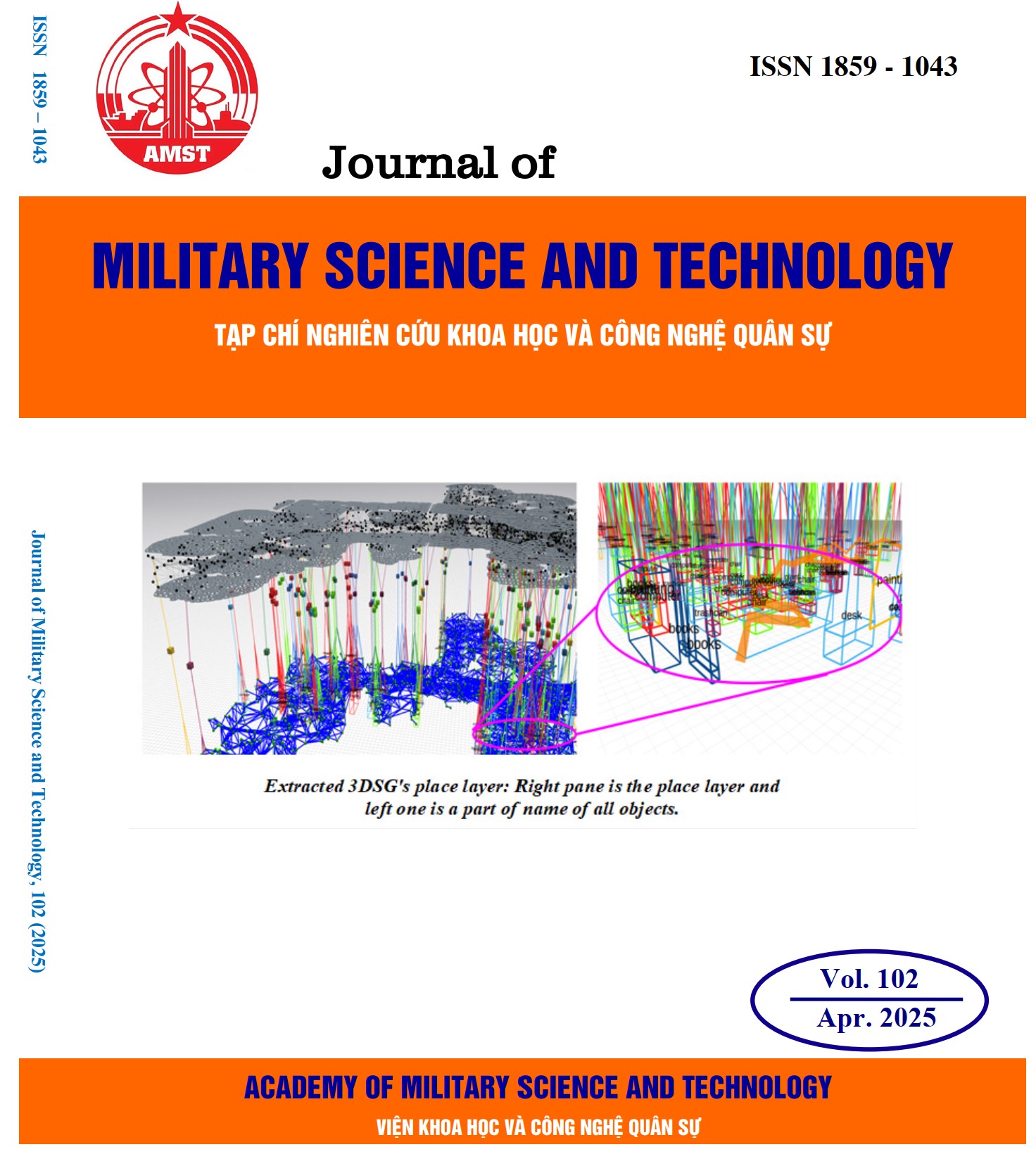Phân loại tiếng nổ bằng phương pháp học máy dựa trên các đặc trưng của âm thanh
504 lượt xemDOI:
https://doi.org/10.54939/1859-1043.j.mst.102.2025.133-140Từ khóa:
Phân loại âm thanh; Quang phổ; Học máy.Tóm tắt
Nghiên cứu này tập trung vào việc phân loại tiếng súng bằng cách sử dụng nhiều đặc trưng âm thanh và phương pháp học máy. Các mẫu âm thanh tiếng súng được chuyển đổi thành quang phổ và xử lý bằng phương pháp Máy vector hỗ trợ (SVM) để phân loại. Mô hình được huấn luyện trên tập dữ liệu gồm 851 tệp âm thanh từ 8 loại súng khác nhau. Sử dụng kết hợp các đặc trưng âm thanh cùng với kỹ thuật tiền xử lý dữ liệu, mô hình SVM của nhóm tác giả đạt độ chính xác 95,32% trong việc phân loại các loại súng khác nhau. Mô hình cũng thể hiện hiệu suất tốt với dữ liệu thực tế, mặc dù có độ tin cậy thấp hơn do nhiễu môi trường. Nghiên cứu này cung cấp một phương pháp hiệu quả cho việc phân loại tiếng súng trong các hệ thống giám sát an ninh quốc phòng và ứng dụng giám định âm thanh.
Tài liệu tham khảo
[1]. H. M. Sang and B. T. Duyen, "Research sound monitoring system using multi sensor for military purposes," Journal of Science and Technology, Hanoi University of Industry, vol. 59, no. 3, 2023.
[2]. L. C. Duan, T. V. Kien and N. N. Minh, "Sound source localization for intrusion warning systems," Journal of Military Science and Technology, vol. 59, pp. 90-96, (2019).
[3]. T. C. Thin, N. T. Kien, B. N. My and N. H. Hoang, "Improving sound event detecting in sound source localization using TDOA method," Journal of Military Science and Technology, vol. 80, pp. 60-70, (2022).
[4]. A. Bansal and N. K. Garg, "Environmental Sound Classification: A descriptive review of the literature," Intelligent Systems with Applications, vol. 16, p. 200115, (2022). DOI: https://doi.org/10.1016/j.iswa.2022.200115
[5]. T. Tuncer, Ş. Doğan, E. Akbal and E. Aydemir, "An automated gunshot audio classification method based on finger pattern feature generator and iterative relieff feature selector," ADYU Mühendislik Bilimleri Dergisi, vol. 8, pp. 225-243, (2021).
[6]. S. Hershey, S. Chaudhuri, D. P. W. Ellis, J. F. Gemmeke, A. Jansen and R. C. Moore, "CNN architectures for large-scale audio classification," in 2017 IEEE International Conference on Acoustics, Speech and Signal Processing (ICASSP), New Orleans, LA, USA, (2017). DOI: https://doi.org/10.1109/ICASSP.2017.7952132
[7]. S. B. Nesar, B. M. Whitaker and R. C. Maher, "Machine Learning Analysis on Gunshot Recognition," in Intermountain Engineering, Technology and Computing (IETC), Logan, UT, USA, (2024). DOI: https://doi.org/10.1109/IETC61393.2024.10564263
[8]. U. Zölzer, "Digital Audio Signal Processing", pp. 21-115: Wiley, (2008). DOI: https://doi.org/10.1002/9780470680018
[9]. J. Urbano, D. Bogdanov, P. Herrera, E. Gomez and X. Serra, "What is the effect of audio quality on the robustness of MFCCS and chroma features?," in 15th International Society for Music Information Retrieval Conference, (2014).
[10]. McFee, Brian, C. Raffel, D. Liang, D. P. Ellis, M. McVicar, E. Battenberg and O. Nieto, "Librosa: Audio and music signal analysis in python.," Proceedings of the 14th python in science conference, pp. 18-25, (2015). DOI: https://doi.org/10.25080/Majora-7b98e3ed-003
[11]. A. Chacón-Rodríguez, P. Julián, P. Alvarado and N. Hernández, "Evaluation of Gunshot Detection Algorithms," IEEE Transactions On Circuits And Systems, vol. 58, (2011). DOI: https://doi.org/10.1109/TCSI.2010.2072052
[12]. M. Grandini, E. Bagli and G. Visani, “Metrics for Multi-Class Classification: an Overview”, arXiv, (2020).







